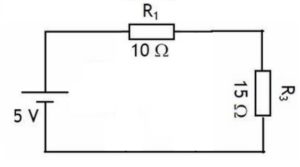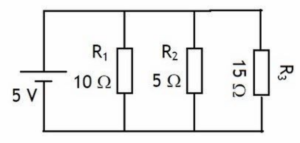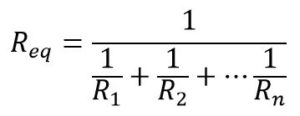There are two ways of connecting elements in an electrical circuit: series or parallel connection. The electrical system that can be found in homes, commercial premises or factories are made up of one or more circuits with elements in parallel. Before explaining why electrical installations are carried out this way, we will explain a little about what an electrical circuit consists of in terms of the connection of its components.
What is an electrical circuit?
The simplest circuit we can devise would be a piece of wire connected to an electrical source and an electrical device. By device we mean items such as a light bulb, a washing machine or a television, to name a few examples. It is the arrangement of these elements that define the type of circuit as either series or parallel.
Series circuits
This is the circuit where all its elements are on the same line. It is mostly used in battery-operated electrical devices such as a torch. The wiring runs continuously from the positive terminal of the battery, through the bulb and switch to the negative terminal.

With this configuration all elements are part of the circuit. If any of these devices were removed or failed, the current would stop flowing. If the lights in your home were connected this way, you could only have one main switch that would turn on all the bulbs simultaneously, and every time a bulb burned out you would have to change it in order to maintain light throughout the house.
Parallel circuit
In other words, all the input connectors coincide with one another, as do the output terminals. By splitting the main circuit we can connect several devices in parallel so that, even if one of element fails, the current does not stop flowing to the rest of the elements.

Why the electrical wiring of a home is in parallel
Having already seen the basic characteristics of the two configurations, it is easy to imagine that it is not viable to have various electrical devices at home connected in series. By opting for parallel connection, you can have several sockets, something that would not be possible in a series connection. All kinds of elements can be connected to the mains, without the need for them all to be switched on at the same time. In addition, electrical appliances operate at a certain voltage, in our case 220V or 240V. In series circuits, the voltage level drops as each element passes through, whereas in parallel, the voltage supplying each element remains constant.
Safety elements in electrical circuits
Esto lo podemos ver con un par de fórmulas. In parallel circuits we have already indicated that the voltage remains constant for all the elements. So, as we add elements, the current through the electrical circuit increases and as a result, the heat generated in the cable increases. This can be demonstrated by means of a couple of formulas.
According to Ohm’s law, the voltage (V) is equal to the current (I) through the circuit multiplied by the resistance (R) of the circuit:

The equivalent resistance when connected in parallel is defined as:

Therefore, if we have two 100Ω resistors (Ω is the symbol for Ohm, the unit in which resistance is measured) the equivalent resistance would be 50Ω if we had three, it would be 33.3Ω. Therefore, given that V is constant and R is increasingly smaller, I increases in value proportionally and so does the temperature.
Si esta temperatura aumenta por encima de un determinado valor se podría producir un incendio. Por este motivo se incorporan mecanismos de seguridad como fusibles o interruptores automáticos que cortan la electricidad cuando esta temperatura sube por encima de cierto umbral. If this temperature rises above a certain value, a fire could occur. For this reason, safety mechanisms such as fuses or circuit breakers are incorporated which cut off the electricity when this temperature rises above a certain threshold.
Now we know why any given electrical installation forms a parallel circuit.

